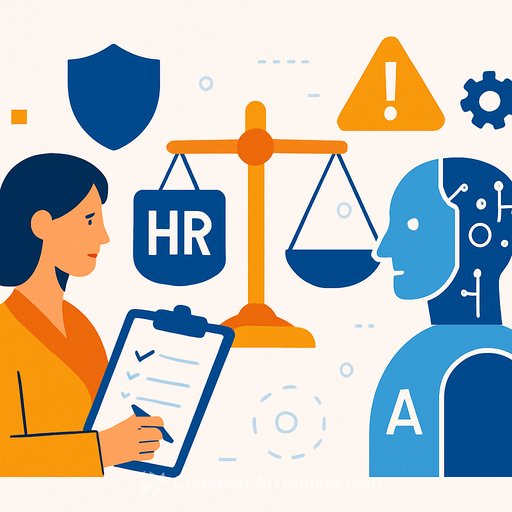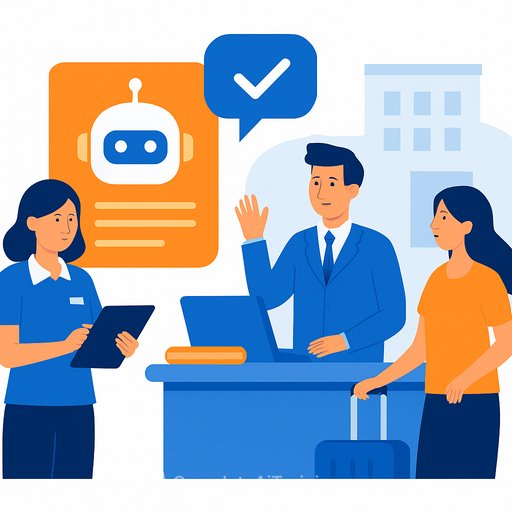AI Discrimination: Why HR Still Owns Every Decision
AI and automated decision systems are becoming standard in HR. They filter resumes, score interviews, surface talent, and flag risk. They also create liability. If an algorithm influences a hiring, promotion, or discipline decision, your company is responsible for the outcome.
That's true whether a manager relies on AI to "assist" a decision or your team lets an ADS result run without human review. Existing laws already cover this. Newer laws raise the bar by adding audits, disclosures, and documentation.
Where AI Helps HR
- Screening: Summarizes applications and flags fit for roles, culture, and expectations.
- Interviews: Analyzes performance and themes across conversations.
- Assessments: Evaluates skills, aptitudes, and work styles.
- Performance: Synthesizes emails, calls, meetings, system activity, and output quality.
- Workforce planning: Recommends placements, promotions, and training paths.
- Conduct and safety: Detects and alerts on potential misconduct.
These tools are useful and, in many cases, as reliable as human judgment. The risk comes from how they're trained, configured, and used.
Why Liability Sticks
AI learns from historical data. Historical data contains bias. That bias can flow into today's outcomes unless you actively prevent it. Example: an ADS downgrades a great candidate due to limited availability caused by medical or family obligations, or penalizes a neurodivergent employee for meeting behaviors linked to a disability.
The law doesn't care whether a human or a model tipped the scale. Under long-standing anti-discrimination statutes, employers are accountable for discriminatory results-period. Some jurisdictions now add audits and transparency obligations for employment AI.
Laws You Should Know
Federal protections under Title VII apply to AI-shaped decisions (EEOC: Title VII). New York City's Automated Employment Decision Tools law requires bias audits and notices (NYC AEDT). Illinois and California have added rules touching AI in hiring. The EU and Colorado classify employment AI as "high-risk," triggering risk assessments, testing, documentation, and human oversight.
Make AI High-Trust: The Risk Assessment Playbook
Treat every HR use of AI as high-risk. Your risk assessment should identify where discrimination could creep in and implement controls that keep humans accountable and outcomes fair.
- Define the decision: What the tool does, who it affects, and how results are used.
- Test before use: Run pre-deployment bias testing across protected groups; validate accuracy and consistency.
- Check the data: Ensure training and input data are relevant, up-to-date, and representative; remove proxies for protected traits.
- Limit access: Only trained HR and managers can configure, prompt, or apply outputs.
- Keep a human in the loop: Require review, justification, and approval for any AI-influenced action.
- Accommodations first: Adjust processes for disability, medical, or caregiving factors; avoid penalizing lawful leave or flexibility needs.
- Govern vendors: Demand bias audits, documentation, model cards, and change logs; contract for audit rights.
- Log everything: Prompts, configurations, data sources, versions, decisions, overrides, and outcomes.
- Notify candidates/employees where required: Provide meaningful information about the tool's role and offer a manual review path.
- Secure the pipeline: Protect data privacy, retention, and access; align with security policies.
What This Delivers
- Lower risk of discriminatory decisions and fewer harmful implementations.
- Compliance with AI-specific HR regulations and long-standing anti-discrimination laws.
- Documentation that supports your defense if a claim is raised.
Quarter-Start Checklist
- Inventory every AI/ADS touching hiring, promotion, performance, and discipline.
- Appoint an accountable owner across HR, Legal, and IT; set decision rights.
- Write a short policy: approved tools, required audits, human review, documentation standards.
- Select one priority use case; run a bias audit and a human-in-the-loop pilot.
- Set thresholds and overrides: Define when to reject, flag, or escalate.
- Train managers and recruiters on proper prompts, pitfalls, and fair-use rules.
- Create an appeal process for candidates and employees.
- Schedule quarterly audits and vendor check-ins; version and change-control your models.
- Coordinate with counsel on jurisdiction-specific notice and recordkeeping requirements.
Bottom Line
AI is fallible. So are people. The answer isn't to avoid AI-it's to run a disciplined risk process, keep humans in charge, and document every critical step. Do that, and you'll get speed and scale without sacrificing fairness or accountability.
Want practical AI upskilling for HR and related roles? Explore job-focused options at Complete AI Training: Courses by Job.
Your membership also unlocks:






